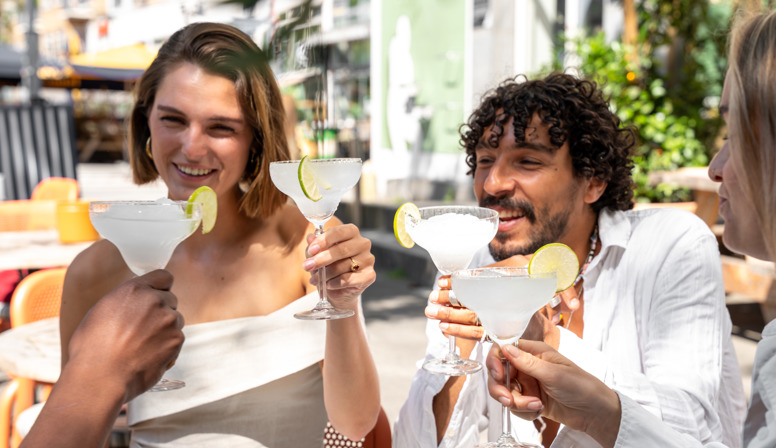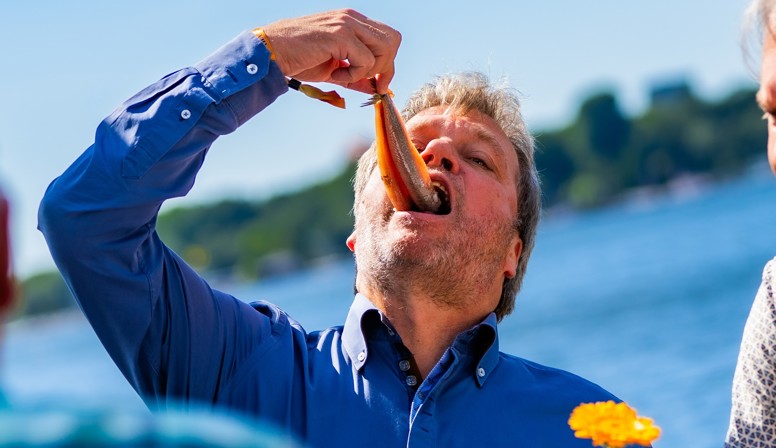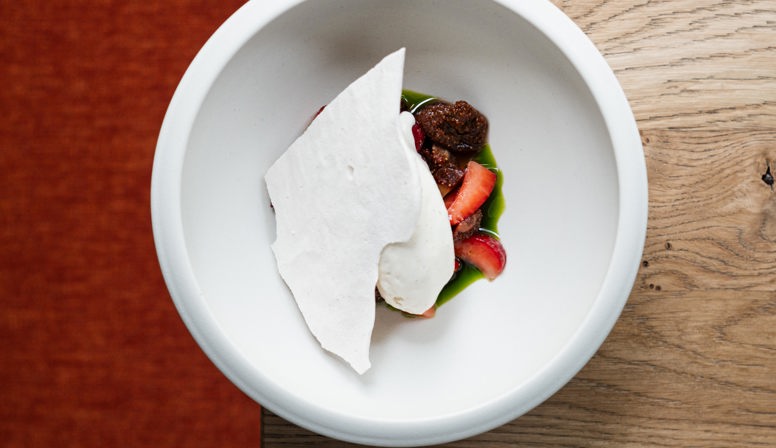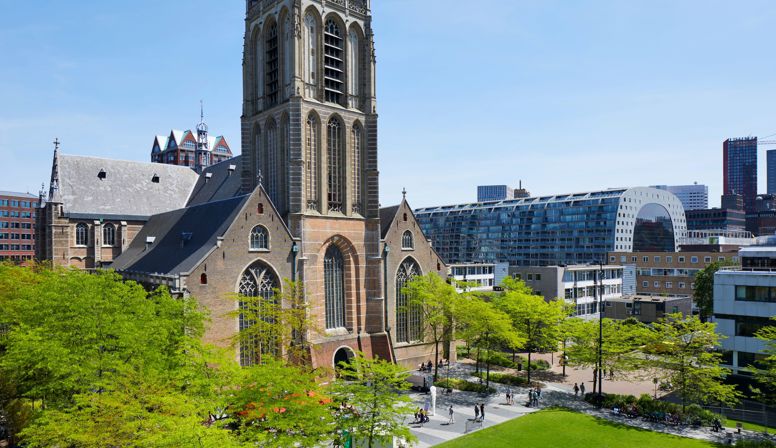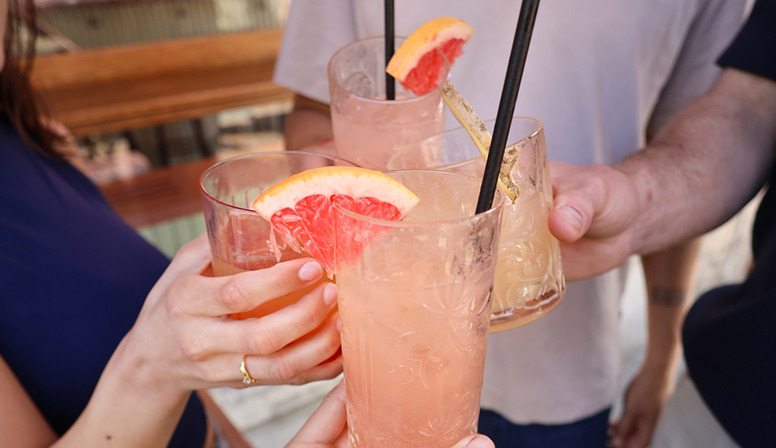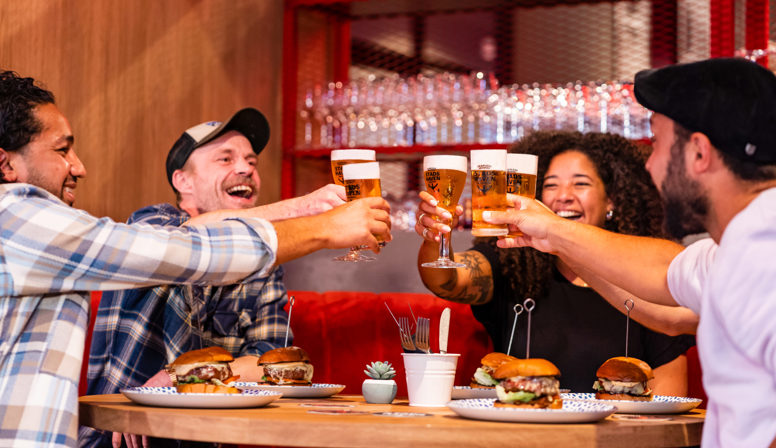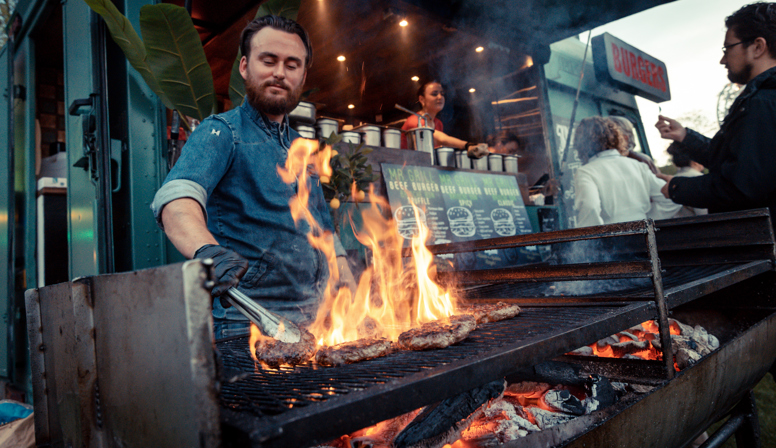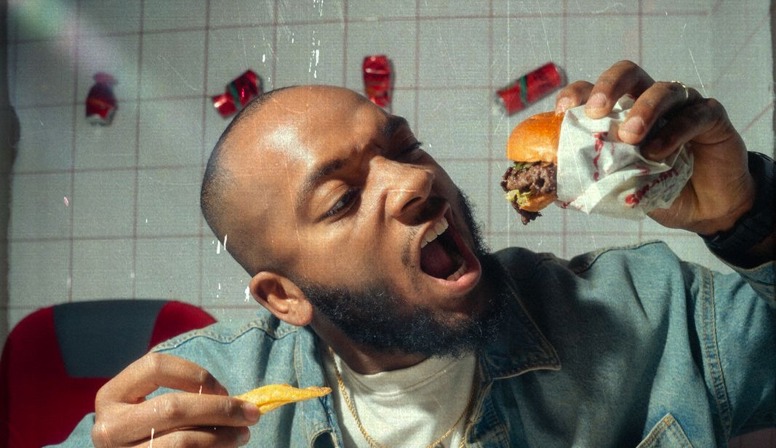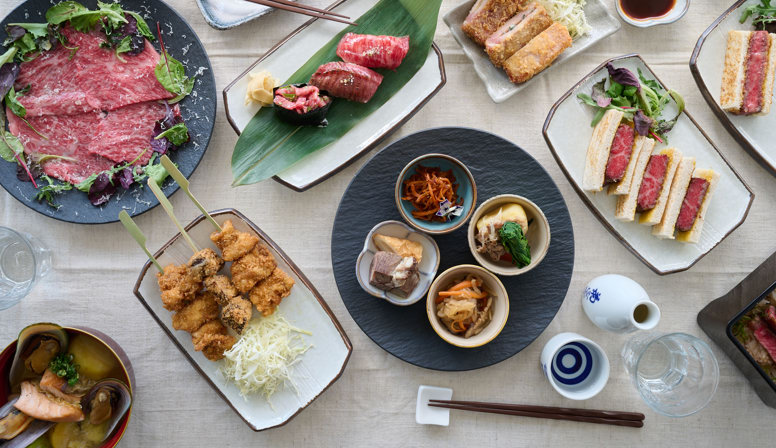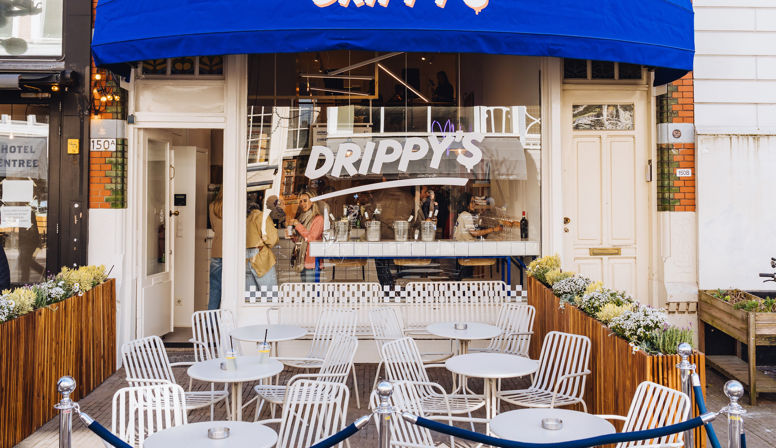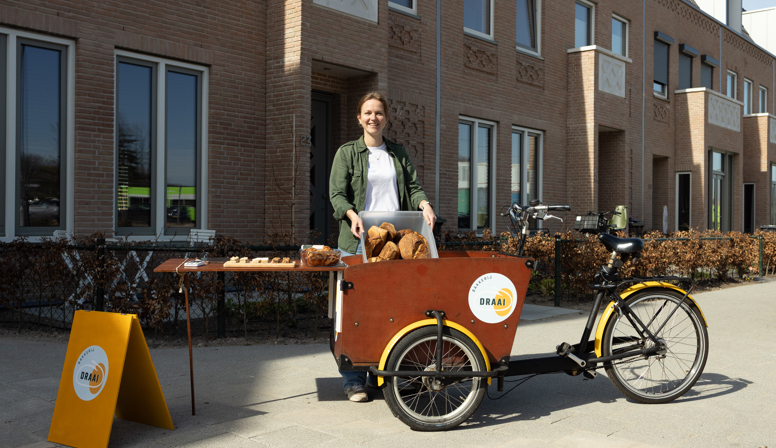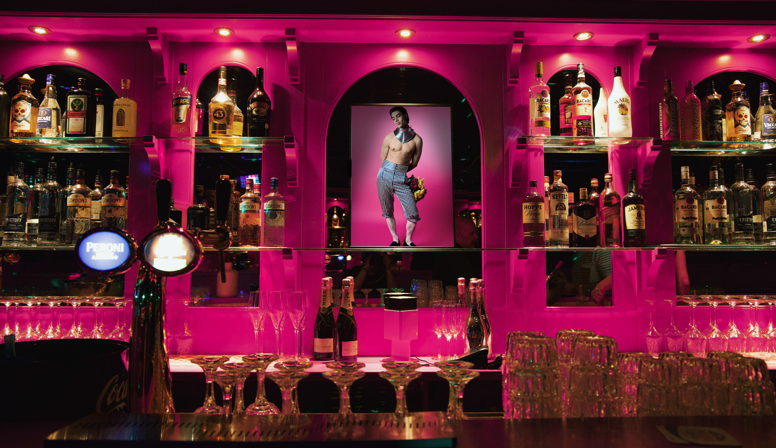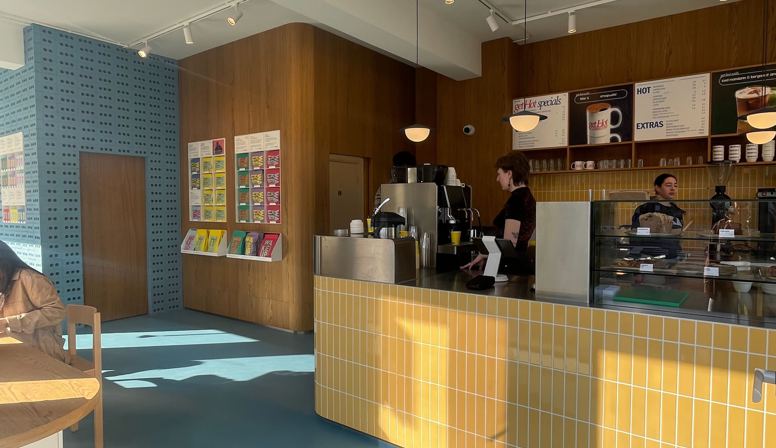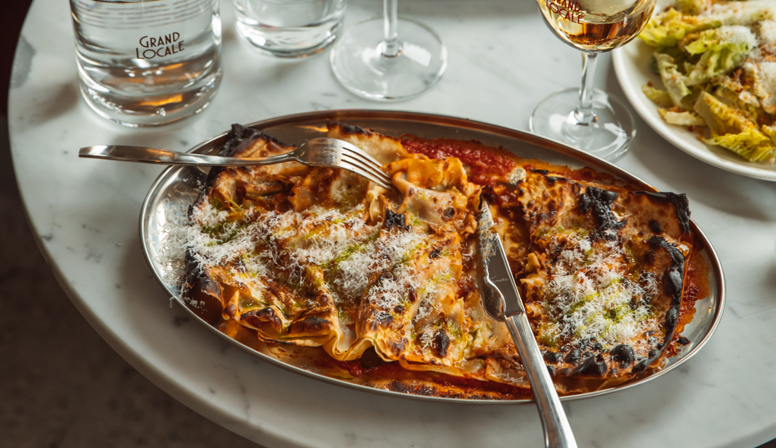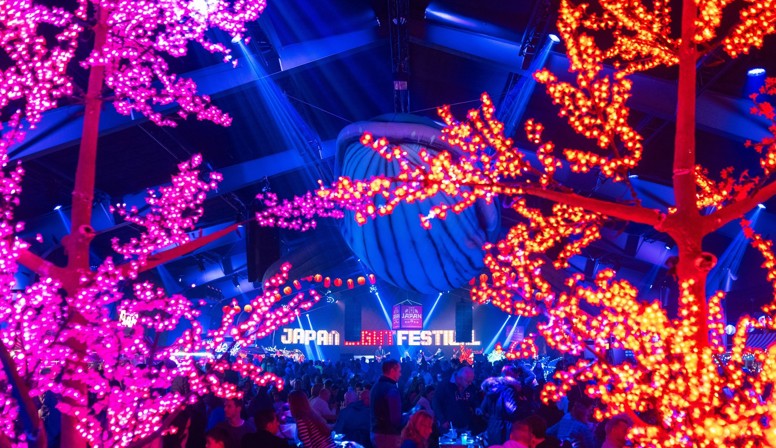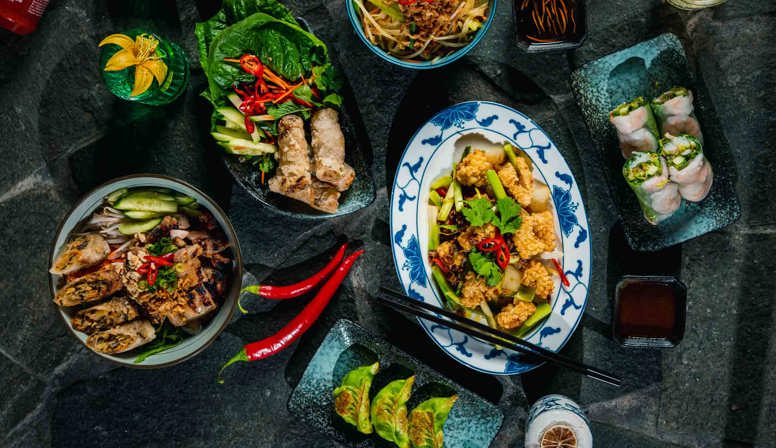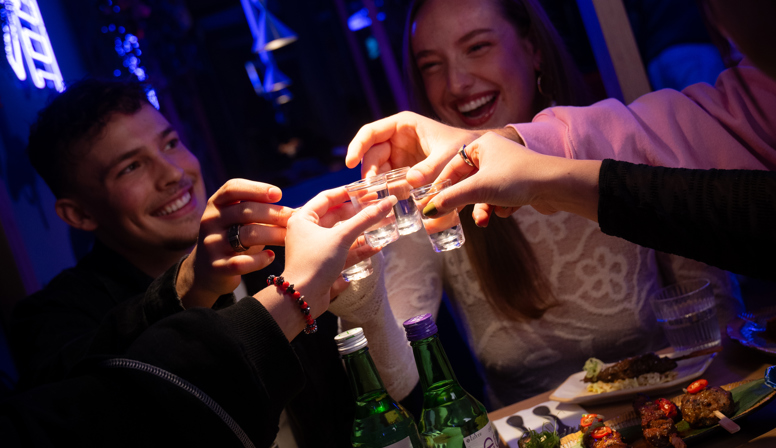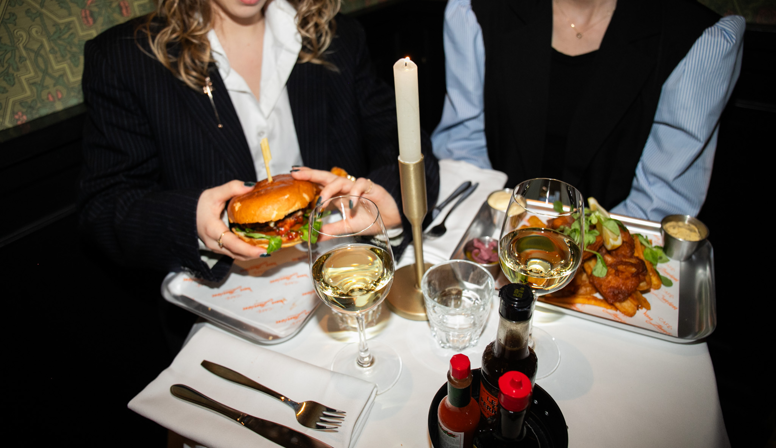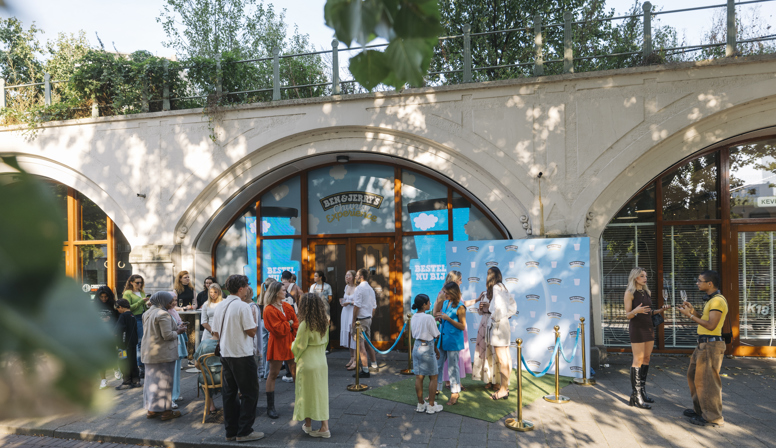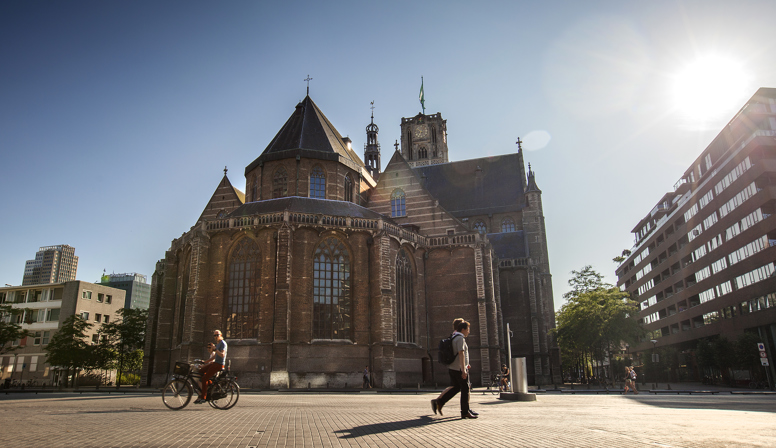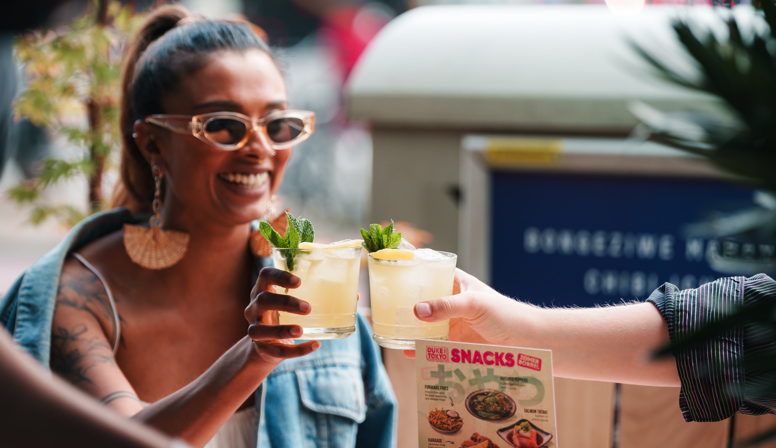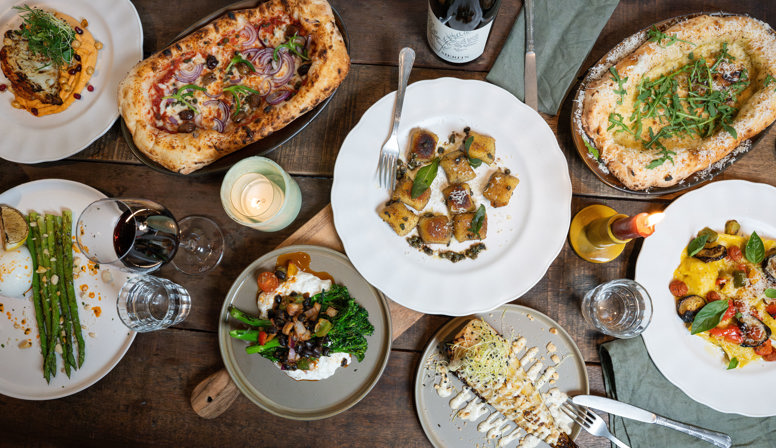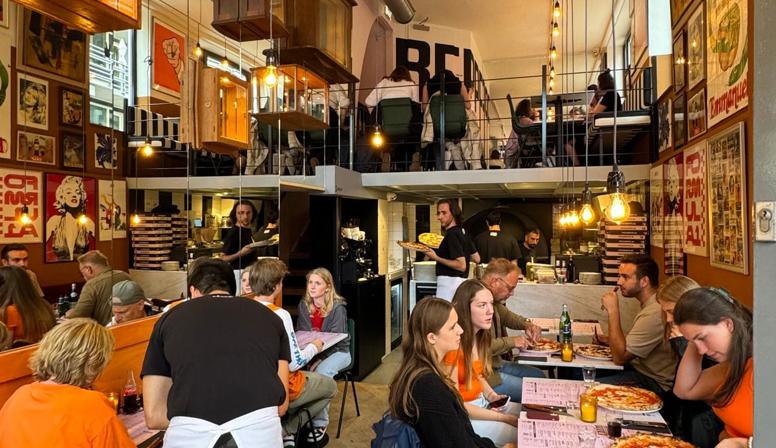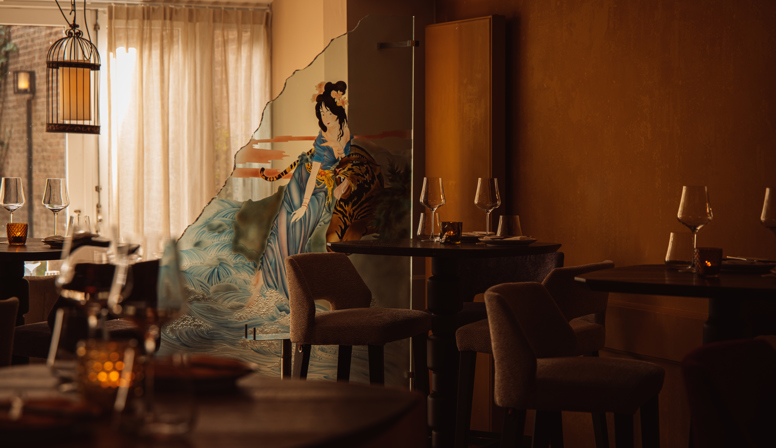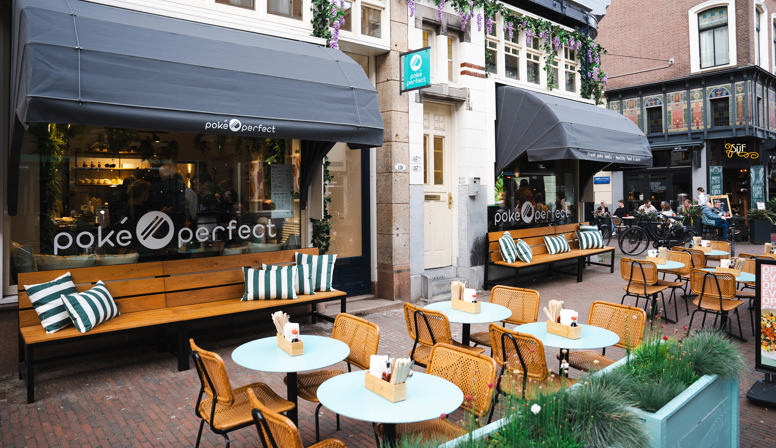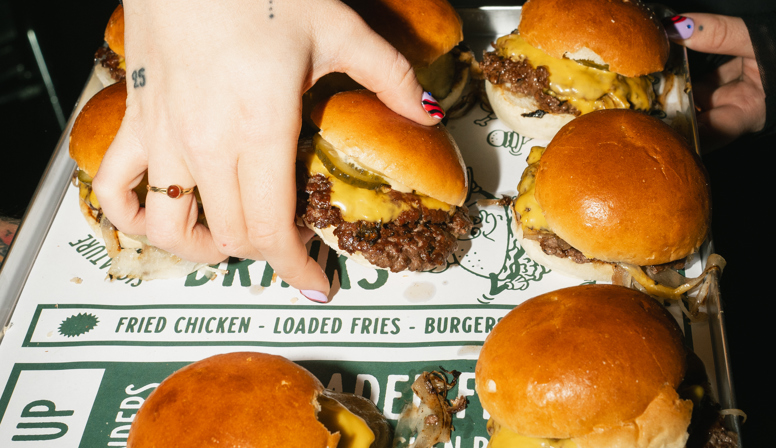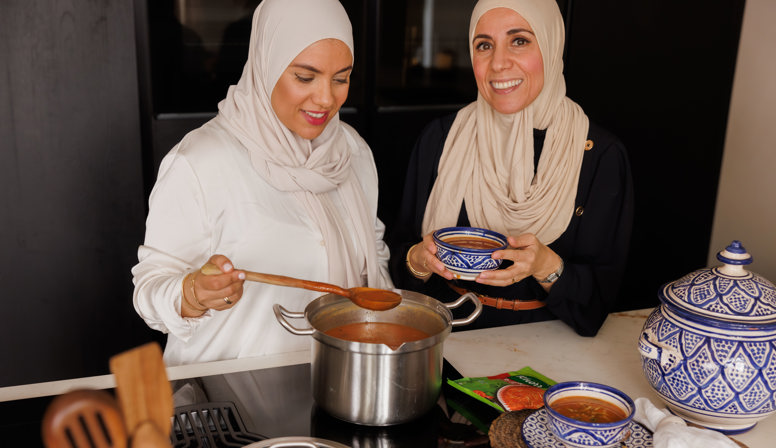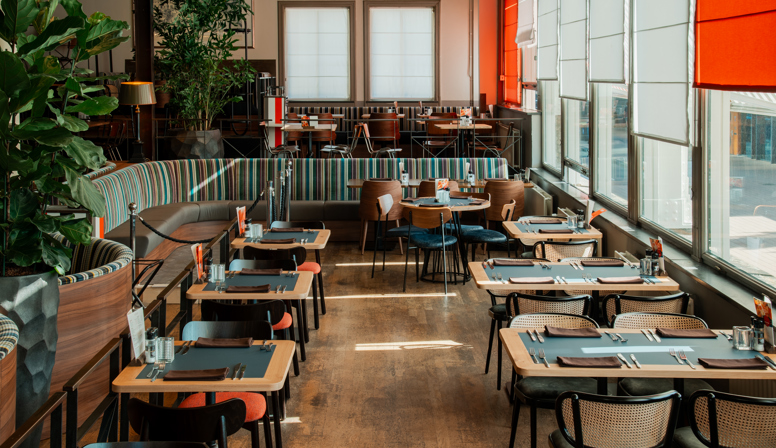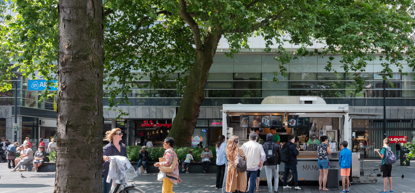
Rotterdam street food: not off the streets
Snacking is something we can do here like no other. You can wake up the average Rotterdammer for fries or a Vietnamese spring roll. Of course, we prefer to eat them on the street. Don't bother, eat quickly and move on. These four street food stalls are an essential part of the Rotterdam street scene.
Hans Worst - Rock 'n' roll with the RotDog
In twenty years, Hans Worst has become the uncrowned king of sausages. Because in addition to his regular spot on Coolsingel (near the old C&A), Hans Worst, or Hans Bode, also takes care of the fat mouths of visitors to North Sea Jazz and Pinkpop. Sometimes he even roasts his sausages in De Kuip. The atmosphere of music festivals suits him well, because without music there is no Hans Worst. There is always soul, funk, jazz, Latin or reggae coming through the stall.
Hans uses organic sausages. He knows exactly where the beef and pork come from. Hans' biggest hit is the Rotdog. This is a hot dog with cheddar cheese, which is wrapped in bacon, then baked with bun and all. The rotdog is served on strips of raw endive (yes yes, there are vitamins in it too!) and Hans's own Black Beer Sauce , based on dark beer indeed, for a slightly spicier, fresh-sour effect.
Stall on Coolsingel and at events, hansworst.nl
Mama Hong - a real family affair
The Netherlands is the only place in the world where the Vietnamese spring roll is sold as a street snack, Thuan Nguyen of Mama Hong tells us: 'Even in Vietnam itself, that doesn't happen. There, the spring roll is part of a dish in a restaurant.' The explanation for this unique snack situation lies in the already existing culture of street food in the Netherlands. Thuan: 'They already knew the herring and fries.' Also, thanks to our past in the Dutch East Indies, spring rolls were already familiar territory.
Thuan's parents fled their homeland Vietnam in the late 1970s in a small boat. In the Netherlands, the Nguyens - mum Hong, dad Hieu and his brother Danh - started selling spring rolls to earn a living.
Meanwhile, the second generation of Nguyen is at the helm, and the range has expanded to include Bánh mì (baguettes topped with fresh vegetables, pickles and meat) and spring rolls (Gỏi cuốn, healthy, unbaked rice skin spring rolls). Everything is made in-house in the production kitchen in Berkel en Rodenrijs. For the spring roll sheets (a kind of pancakes), Thuan developed his own machine. He starts baking the rolls at 5 o'clock in the morning. The days are long, "but that's nothing compared to the hours my parents used to make.
Stalls on Hoogstraat (next to Hema) and Lijnbaan (off Albert Heijn), mamahong.nl
Roti Time - Bright spot on Kralingse Zoom
For 28 years, Roti Time's stall has stood next to Kralingse Zoom metro station. Every working day, a steady stream of students, office workers and local residents know how to find their way to this Surinamese takeaway stall. Bestsellers are the chicken curry, tja sieuw and baras. 'We bake these fresh here, you won't see tough warmed-up baras from the microwave with us,' says owner Bella. Of course, the fresh and spicy chutney is also homemade, as is the sambal. A large plastic container filled with at least 5 litres of bright yellow sambal stands ready on the counter. The spicy seasoning (don't call it a sauce) is made from half madame Jeanette, half adjumé pepper. That bin will be empty within two days, Bella assures.
Roti Time was founded 28 years ago by Ravi, along with his brother and his father, who sadly passed away seven years ago. Ravi considered quitting, but his daughter Manisha and her best friend Bella thought that was a waste. Together, they continued the stall. Meanwhile, Ravi also comes back regularly, which is nice.
Even though the location is not very sparkling, Bella wouldn't leave there for anything. It is a good sales spot, with nice customers. For instance, there is a gentleman who comes every day, from Monday to Thursday, to get satay. 'One time he took something else, but regretted it the next day.' Since then, it's satay every day again.
Every working day at the car park next to Kralingse Zoom metro station, until about 8 pm, rotitime.nl
Bram Ladage - impossible to imagine life without it
What else should we say about this? After 57 years, it is impossible to imagine the city without the famous chip shop with its blue-checkered house style. When the stall with the mega-Pepsi can on Binnenwegplein closed briefly for renovation, the city was in an uproar. In 1967, the young Bram sold his first fries at the market on the Binnenrotte. By now, the fries empire has grown to 43 Bram Ladage outlets. The Ladage empire stretches as far as Tilburg.
Bram moves with the times. There are now trendy toppings à la loaded fries, and there are veg snacks. What few people know is that the potatoes that go into Brammetjes are grown near Rotterdam in the Hoeksche Waard. Once a year, they hold an open day there, so you can see with your own eyes where your fries come from today. This year, this potato harvest day is on Saturday 14 September.
Just about everywhere in the city and region, bramladage.co.uk
What exactly is street food?
It is an English term for food and drink sold and eaten on the streets. Not that the English invented it: the ancient Greeks sold small fried fish, and in China you can eat dumplings on the street for centuries. Wherever you are in the world: a dish is only really 'street food' if you can eat it straight away, right out of the fist. To make eating with your hands easier, clever cooks over the centuries have developed handy portable food. For example, by putting a layer of dough around it (in the form of a roll, pie, bao or taco), or by making a firm crispy crust around it (as with the croquette, bitterball, or Italian suppli (rice balls).
Text: Lot Piscaer.
Photo: Titia Hahne.
Want to read more news?
Read more tips, background stories and news about Rotterdam.



